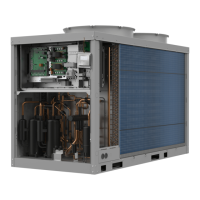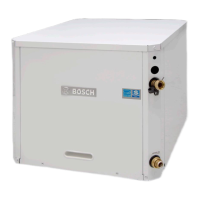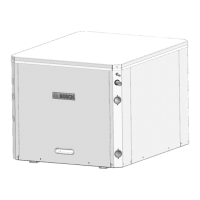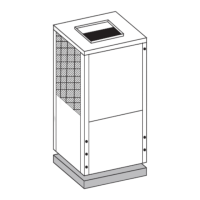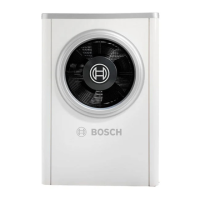Installation
9
Compress 5800i AW – 6721862724 (2023/06)
charge pressure) of the expansion vessel is of highest importance.
Check the pre-charge pressure and function annually.
Furthermore, the function of automatic air vents should also be checked
during maintenance.
It is also important to check and document the top-up water quantities
via a water meter. Larger and regularly required water top-up quantities
indicate insufficient pressure maintenance, leaks or continuous oxygen
input.
Antifreeze
Unsuitable antifreeze can damage the heat exchanger or cause a fault in
the heat source or DHW supply.
Unsuitable antifreeze can damage the heat source and heating system.
Only use antifreeze as listed in the document 6720841872, which
contains antifreeze products approved by us.
▶ Only use antifreeze according to the specifications of the
manufacturer, e.g with regard to the minimum concentration.
▶ Follow the instructions of the manufacturer of the antifreeze about
regular checking of the concentration and corrective measures.
▶ The use of antifreeze reduces the efficiency.
Heating water additives
Unsuitable heating water additives can cause damage to the heat source
and heating system or cause a fault in the heat source or DHW supply.
The use of a heating water additive, e.g. corrosion inhibitor, is only
allowed, if the manufacturer of the heating water additive certifies its
suitability for all materials in the heating system.
▶ Only use heating water additives in accordance with the instructions
of its manufacturer about concentration, regular checking of the
concentration and corrective measures.
Sealants in the heating water can cause deposits in the heat generator,
therefore it is not advisable to use it.
Suitable water treatment products (inhibitors/cleaners) can be
obtained from the following manufacturers:
Follow the guidance of BS7593:2019
1)
for treatment of water in
domestic hot water heating systems.
Table 6
3.3 Minimum volume and execution of the heating
system
Normally the energy for the defrost cycle is drawn form the buffer
cylinder and the heating system, but in small systems with low flow the
controller may switch to draw energy from the DHW cylinder instead.
Even the electrical heater may be activated to ensure a proper defrost.
4 Installation
CAUTION
Risk of injury!
During transport and installation there is a risk of crushing injury. During
maintenance, internal parts of the appliance may become hot.
▶ The installer is obliged to wear gloves during transport, installation
and maintenance.
NOTICE
Risk of material damage!
Particles in the pipework of the heating system can damage the heat
pump system.
▶ Installation of a particle filter is mandatory for all systems.
A small amunt of water residue may be present inside the appliance due
to factory testing.
4.1 Transport and storage
The indoor unit must always be transported and stored in an upright
position. If needed, it may be leaned temporarily.
The indoor unit may not be stored or transported at temperatures below
– 10 °C.
4.2 Installation checklist
Each installation is unique. The following checklist provides a general
description of how the installation should be performed.
1. Install the fill valve.
2. Install the non-return valve if applicable ( see required accessories
chapter in 2.9.1)
3. Install the leakage drain hoses.
4. Connect heat pump to the indoor unit.
5. Connect the indoor unit to the buffer cylinder.
6. Install particle filter and magnetite separator (magnetite separator is
only optional for new building with only under-floor heating system).
7. Connect the indoor unit to the water heater and the pressure-relief
valve.
8. Mount the outside temperature sensor and any room controller.
9. Install and place the flow temperature sensor T0 at the buffer
cylinder.
10.Connect the CAN-BUS cable to the heat pump and the indoor unit.
11.Install any accessories.
12.Connect the EMS-BUS cable to accessories if needed.
13.Fill and vent the water heater.
14. Fill and vent the heating system before commissioning.
15.Establish the electrical connection of the system.
4.3 Dimensioning of the DHW circulation pipes
If the following conditions are met, there is no need for a time-consuming
calculation for one- to four-family houses:
• Circulation, individual and collecting pipes with an internal diameter
of at least 10 mm
• Circulation pump DN 15 with a flow rate of max. 200 l/h and a
delivery pressure of 100 mbar
• Length of DHW pipes max. 30 m
1) Only applicable in the United Kingdom
ADEY www.adey.com
FERNOX www.fernox.com
SENTINEL www.sentinelprotects.com/uk
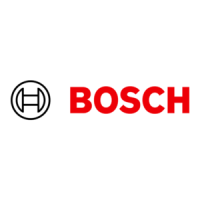
